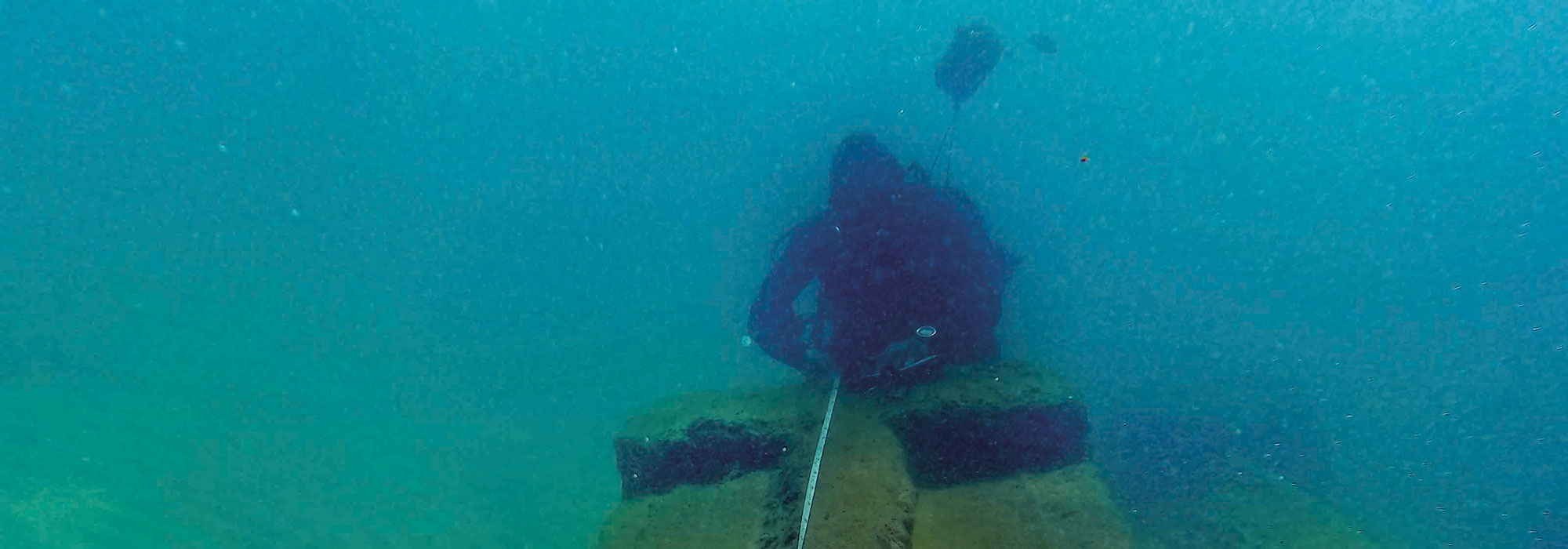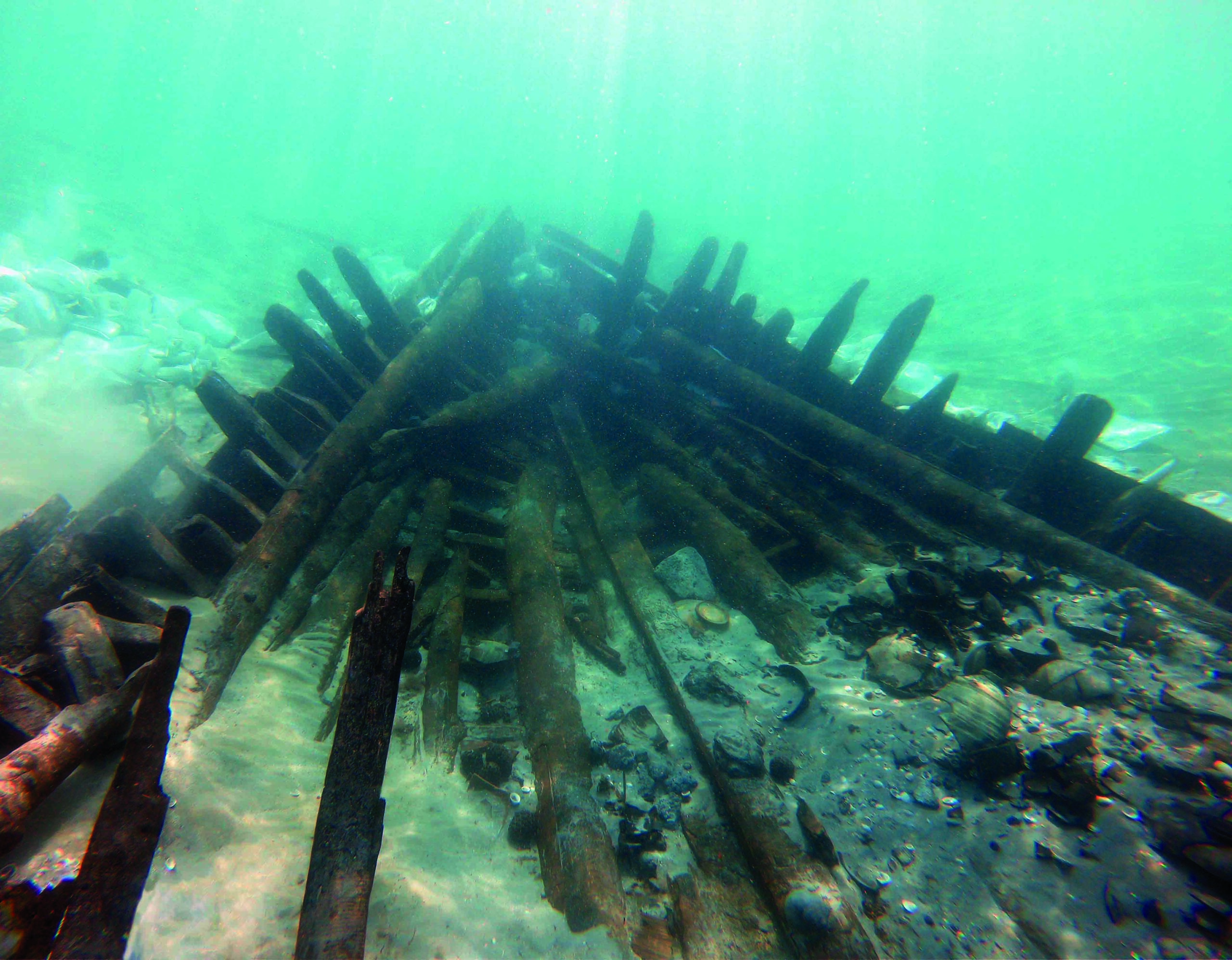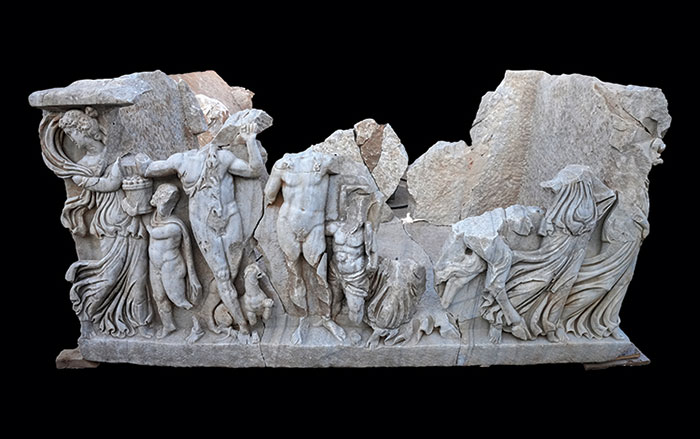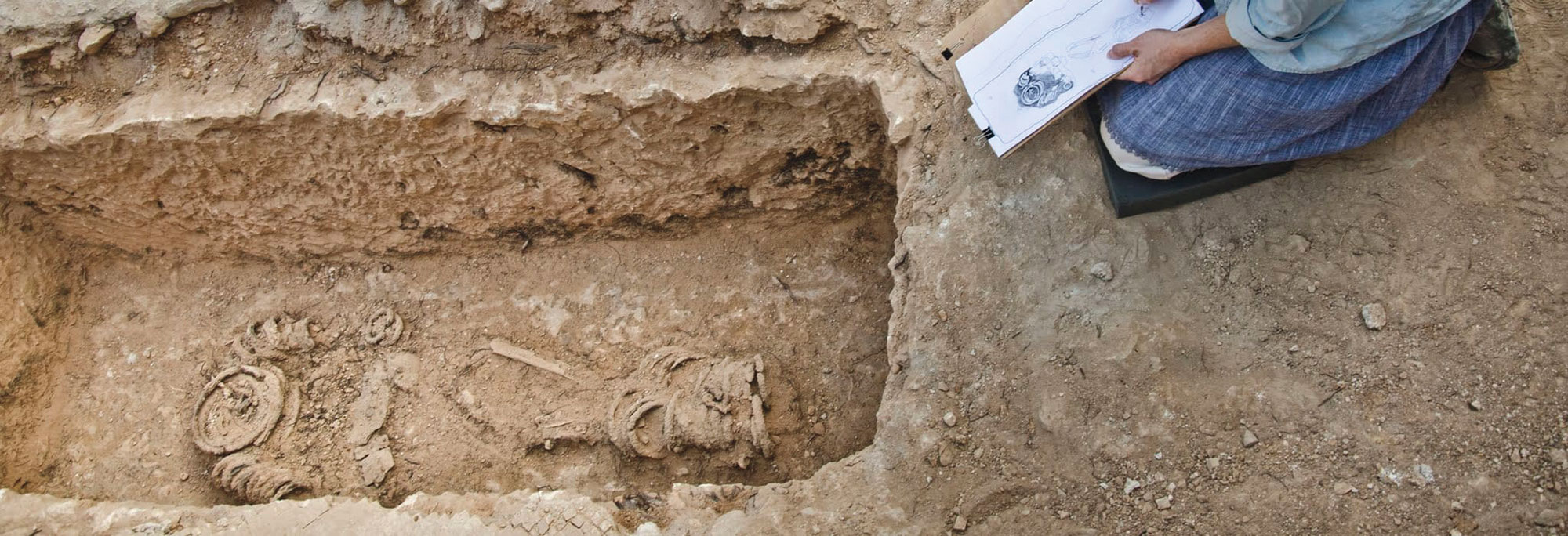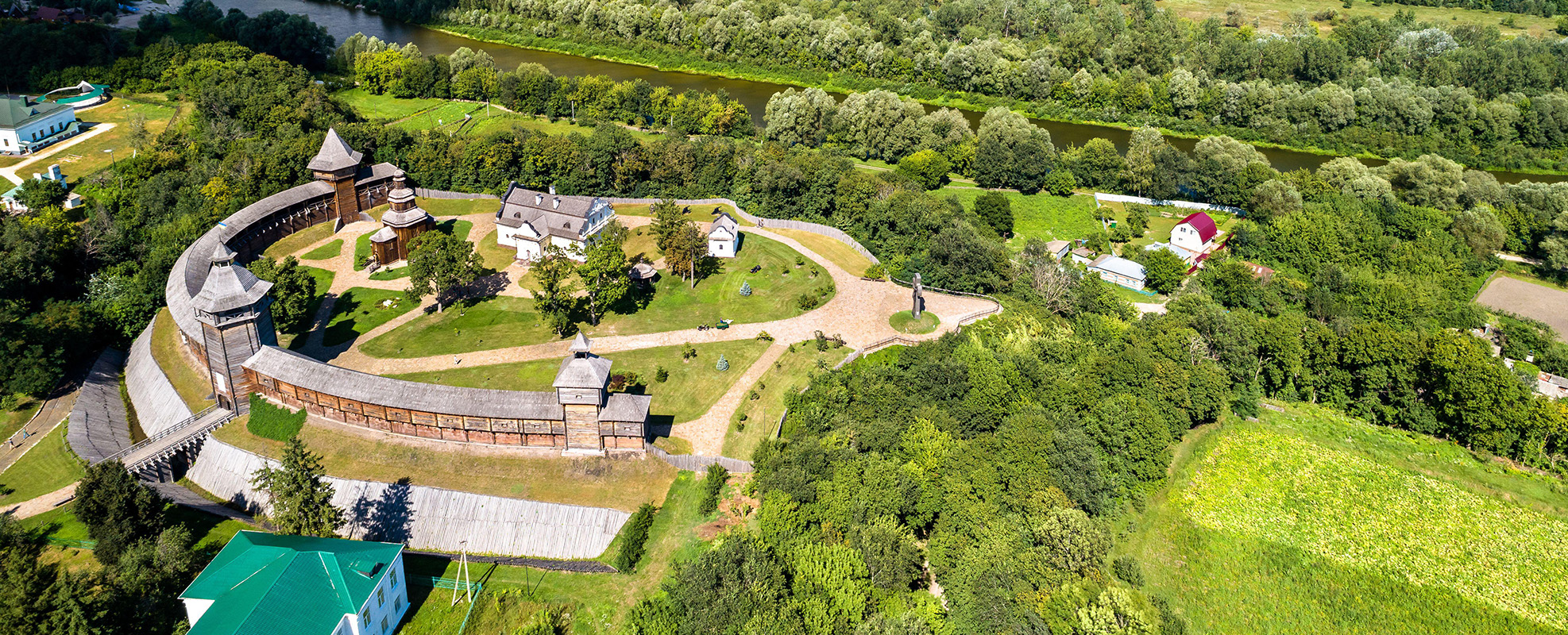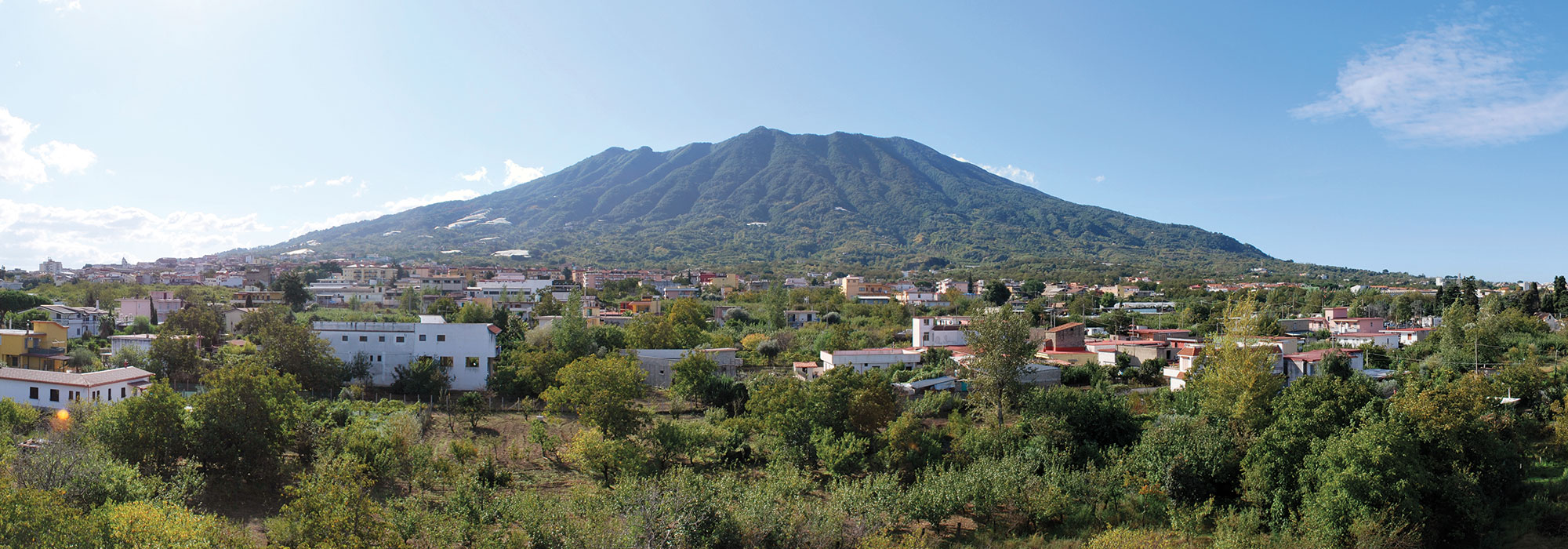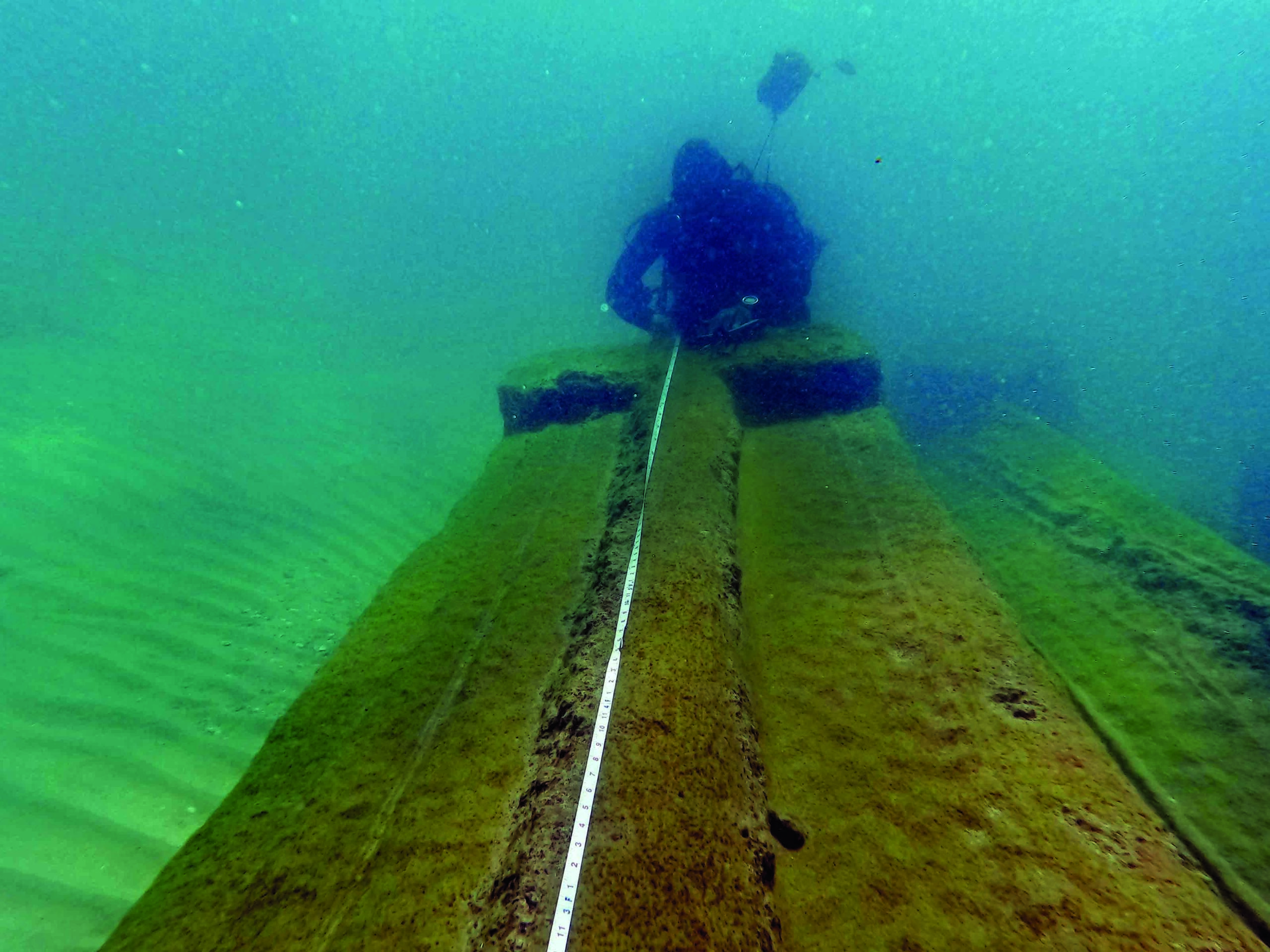
Israel Antiquities Authority (IAA) archaeologists have begun to investigate 44 tons of marble building materials that a swimmer spotted in shallow water 600 feet off the coast of the ancient Roman port of Caesarea after they were exposed by a recent storm. The huge number of finely carved columns, capitals, and other architectural elements were part of the cargo of a merchant ship sailing from the Aegean or Black Sea region that sank almost 2,000 years ago, scattering its contents on the seafloor.

According to IAA archaeologist Koby Sharvit, the building materials were likely intended for a temple or other monumental structure. “These fine pieces are characteristic of large-scale, majestic public buildings,” he says. “In Roman Caesarea, such architectural elements were usually made of local stone covered with white plaster to appear like marble. Here we are talking about genuine marble.” Sharvit says that while archaeologists knew about the shipwreck, they weren’t able to precisely locate it. Now they will be able to study it and assess its scope and significance.


